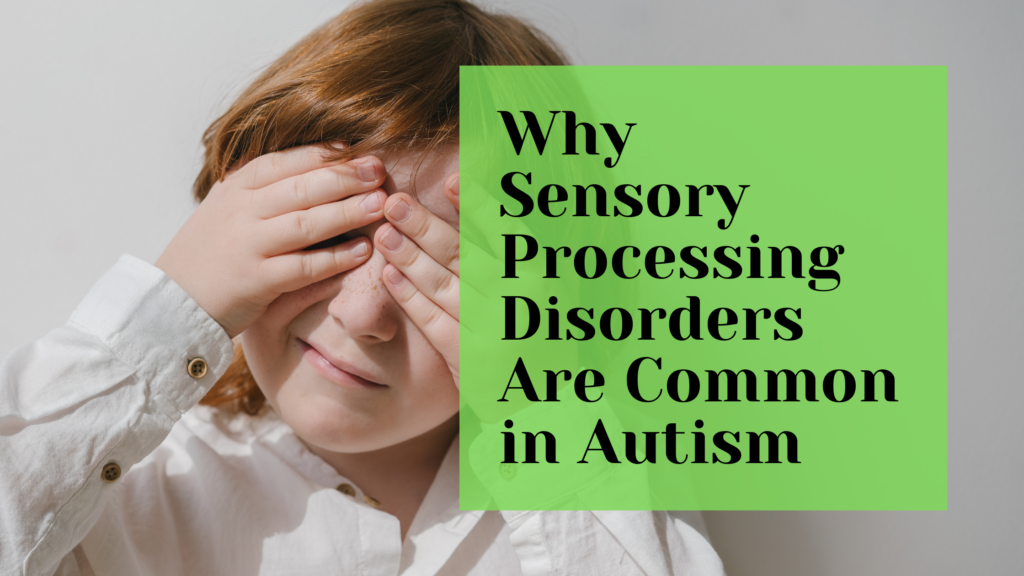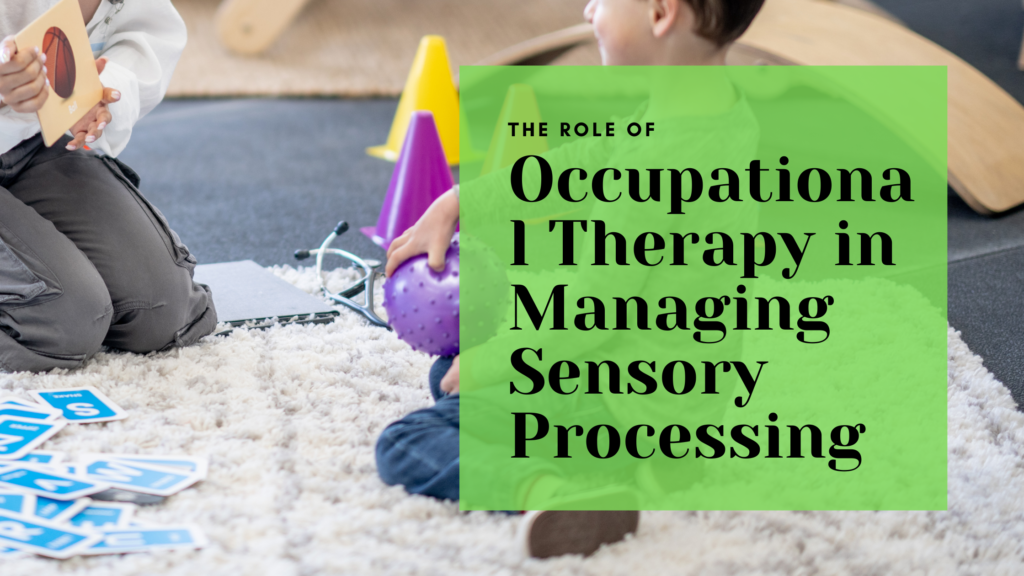I. Introduction
Understanding Sensory Sensitivities in Autism
Autistic individuals often experience the world differently due to variations in sensory processing. These differences, known as sensory processing issues, can make everyday environments overwhelming or under-stimulating. Sensory processing refers to how the brain receives, interprets, and responds to sensory information from the environment, such as sights, sounds, textures, and smells. In autistic individuals, this process may be heightened (hypersensitivity) or diminished (hyposensitivity), leading to unique challenges in daily life.
Importance of Sensory Strategies
Developing effective sensory strategies is crucial for improving the quality of life for autistic individuals. Sensory strategies help manage the sensory input that an individual receives, allowing them to better navigate their environment, reduce stress, and enhance their ability to focus, learn, and interact socially. Implementing these strategies can provide much-needed support for both the individual and their caregivers, fostering a more inclusive and comfortable living experience.
II. What Are Sensory Processing Issues in Autism?
Definition and Overview
Sensory processing issues in autism involve the brain’s difficulty in effectively processing and responding to sensory stimuli. This can result in either an overreaction or underreaction to sensory input. For example, an autistic person might find the sound of a vacuum cleaner unbearably loud (hypersensitivity) or may seek out intense sensory experiences, such as spinning or rocking (hyposensitivity).
Common Sensory Challenges
The sensory challenges faced by autistic individuals can be broadly categorized into two types:
- Hypersensitivity (Over-responsiveness): This occurs when sensory stimuli are perceived as too intense. Common examples include discomfort with bright lights, loud noises, or specific textures of clothing.
- Hyposensitivity (Under-responsiveness): In this case, the individual may not respond to sensory input as expected, leading them to seek out more sensory stimulation. For example, they might enjoy crashing into things, chewing on objects, or staring at spinning objects.
Impact on Daily Life
Sensory processing issues can significantly impact daily activities, learning, and social interactions. For example, a child who is hypersensitive to noise might struggle to focus in a noisy classroom, while one who is hyposensitive might have difficulty sitting still or paying attention. These challenges can lead to increased anxiety, behavioral issues, and difficulties in communication, making it essential to address sensory needs with appropriate strategies.
III. Top Sensory Strategies for Autistic Individuals
1. Creating a Sensory-Friendly Environment
At Home
Creating a sensory-friendly environment at home is one of the most effective ways to support an autistic individual. Here are some tips to achieve this:
- Quiet Zones: Designate specific areas in the home where the individual can retreat to when they feel overwhelmed. These areas should be free from loud noises and harsh lighting.
- Lighting Adjustments: Use soft, adjustable lighting to reduce glare and intensity. Natural light can be beneficial, but it should be moderated with blinds or curtains to prevent overstimulation.
- Minimizing Clutter: A cluttered space can be visually overwhelming. Keeping the environment organized and minimizing unnecessary items can help create a more calming atmosphere.
In School
Schools can be challenging environments for autistic individuals due to sensory demands. Teachers can implement several strategies to create sensory-friendly classrooms:
- Sensory Corners: Setting up a sensory corner in the classroom where students can go to decompress can be very beneficial. This space might include soft seating, fidget toys, and dim lighting.
- Flexible Seating: Allowing students to choose where they sit based on their sensory preferences can help them stay focused and comfortable. Options might include standing desks, wobble chairs, or quiet, low-traffic areas of the classroom.
In Public Places
Public places can be overwhelming for autistic individuals due to unpredictable sensory stimuli. Preparing and modifying these environments can make outings more manageable:
- Noise-Cancelling Headphones: These can help reduce auditory overload in noisy environments, such as malls, restaurants, or airports.
- Avoiding Peak Times: Planning outings during less crowded times can reduce exposure to overwhelming sensory input, making the experience more enjoyable and manageable.
2. Sensory Diets
What is a Sensory Diet?
A sensory diet is a personalized plan that provides specific sensory activities throughout the day to help regulate an individual’s sensory needs. Just as a nutritional diet provides the body with essential nutrients, a sensory diet provides the nervous system with the necessary sensory input to stay balanced and focused.
Examples of Sensory Diet Activities
- Proprioceptive Activities: These activities involve deep pressure and heavy work, helping to ground and calm the individual. Examples include jumping on a trampoline, pushing a heavy cart, or carrying weighted objects.
- Vestibular Activities: These activities engage the vestibular system, which controls balance and spatial orientation. Swinging, spinning, or balancing on a beam are typical vestibular activities that can help regulate sensory input.
Creating a Personalized Sensory Diet
A sensory diet should be tailored to the individual’s specific sensory needs. Working with an occupational therapist can help identify the most effective activities and how to integrate them into daily routines. The goal is to provide the right balance of sensory input to help the individual feel more regulated and focused throughout the day.
3. Calming Strategies for Sensory Overload
Deep Pressure Techniques
Deep pressure techniques are known to have a calming effect on the nervous system. These strategies can be especially effective during times of sensory overload:
- Weighted Blankets: These blankets provide gentle pressure across the body, which can help reduce anxiety and promote relaxation.
- Compression Vests: Similar to weighted blankets, compression vests apply pressure to the torso, providing a sense of security and calm.
Breathing and Relaxation Exercises
Teaching autistic individuals how to manage their breathing can be a powerful tool for reducing anxiety during sensory overload:
- Guided Breathing Exercises: Simple exercises such as deep belly breathing can help slow down the nervous system and reduce stress.
- Mindfulness Techniques: Incorporating mindfulness practices, like focusing on the breath or engaging in sensory meditation, can help individuals manage their responses to sensory stimuli.
Safe Spaces
Having a designated safe space where an autistic individual can retreat to during sensory overload is crucial. This space should be free from sensory triggers and filled with comforting items, such as soft pillows, blankets, and preferred sensory toys. The safe space serves as a sanctuary for the individual to regroup and recover from overwhelming sensory input.
4. Sensory Tools and Gadgets
Noise-Cancelling Headphones
Noise-cancelling headphones are an essential tool for managing auditory overload in noisy environments. They work by blocking out external noise, creating a quieter, more manageable space for the individual. This tool can be particularly useful in settings like crowded restaurants, busy streets, or public transportation.
Fidget Toys
Fidget toys provide a tactile outlet for energy and can help autistic individuals focus and self-regulate. These toys come in various forms, such as spinners, stress balls, and putty, and can be a discreet way to manage sensory needs in different settings.
Visual and Tactile Tools
Tools like sensory lights, textured objects, or visual schedules can aid in sensory management. For instance:
- Sensory Lights: These can include soft, color-changing lights that provide visual stimulation without being overwhelming.
- Textured Objects: Items with different textures, such as soft fabrics or rough surfaces, can be soothing and help the individual engage with their environment in a controlled way.
- Visual Schedules: Using visual aids to outline daily activities can help reduce anxiety by providing a predictable routine.
5. Occupational Therapy and Professional Support
Role of Occupational Therapists
Occupational therapists (OTs) play a vital role in helping autistic individuals develop and implement sensory strategies. They assess sensory processing issues and work with individuals to create customized plans that address their specific needs. These plans often include sensory diets, calming techniques, and strategies for managing sensory overload in various settings.
Sensory Integration Therapy
Sensory integration therapy is a specialized form of occupational therapy that focuses on helping individuals process and respond to sensory input more effectively. Through structured activities, this therapy aims to improve the brain’s ability to interpret and respond to sensory information, leading to better overall functioning in daily life.
Collaborating with Professionals
Working with professionals, such as occupational therapists, educators, and psychologists, is crucial for creating effective sensory strategies. These experts can provide guidance, resources, and ongoing support, ensuring that the sensory strategies are adapted as the individual’s needs evolve.
IV. Implementing Sensory Strategies Across Different Settings
At Home
Incorporating sensory strategies into daily routines at home is essential for creating a supportive environment. This might include setting aside time for sensory diet activities, ensuring that the home environment remains sensory-friendly, and regularly reviewing and adjusting strategies as needed.
In School
Collaboration with educators is key to ensuring that sensory needs are met in the classroom. This can involve working with teachers to implement sensory corners, providing noise-cancelling headphones, and integrating sensory breaks into the school day.
During Travel and Outings
Travel and social outings can present unique sensory challenges. Preparing for these events by packing a sensory toolkit, choosing quieter times for travel, and having a plan for breaks can make these experiences more manageable and enjoyable for autistic individuals.
V. Challenges and Considerations
Trial and Error
Finding the right sensory strategies often involves trial and error. What works for one individual may not work for another, so it’s important to be patient and flexible in experimenting with different approaches.
Consistency and Flexibility
While consistency is important in implementing sensory strategies, it’s equally important to remain flexible. Sensory needs can change over time, so strategies should be regularly reviewed and adjusted as necessary.
Involving the Individual
Involving the autistic individual in the decision-making process is crucial. Their input can provide valuable insights into what strategies are most effective and which environments are most comfortable for them. This collaboration empowers the individual and ensures that the strategies are truly tailored to their needs.
VI. Conclusion
Recap of Top Strategies
Effectively managing sensory processing issues in autistic individuals involves creating sensory-friendly environments, implementing sensory diets, utilizing calming techniques, and employing sensory tools. Occupational therapy and professional support are also crucial in developing personalized strategies that address individual needs.
Encouragement for Caregivers and Individuals
Continuous learning and adaptation are key to successfully managing sensory sensitivities. Caregivers and individuals are encouraged to keep exploring new strategies, remain patient, and celebrate small victories along the way.
Further Resources
For additional information, consider exploring resources such as autism support groups, online communities, and professional organizations specializing in sensory processing and autism.
Engage with the Community
We invite you to share your own strategies and experiences in managing sensory processing issues. Subscribe to our newsletter or follow us on social media for more tips and information on autism and sensory strategies.
By following these strategies and engaging with a supportive community, you can help create a more comfortable and enriching environment for autistic individuals, enhancing their quality of life.


